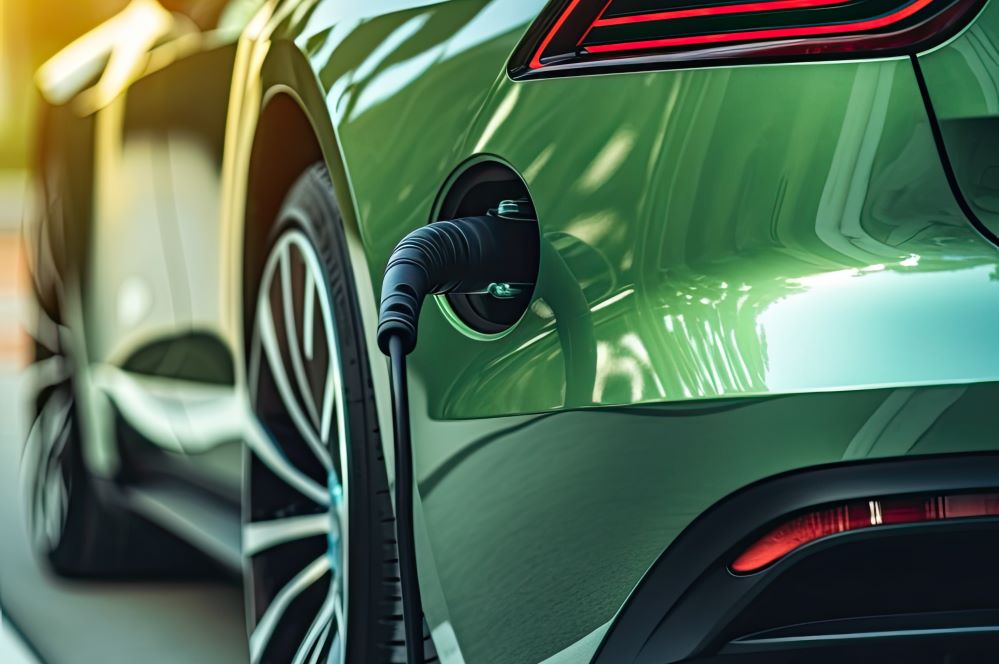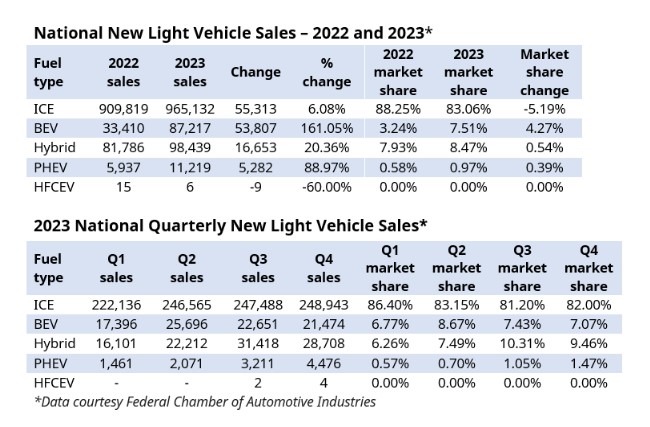
The quarterly update of the AAA's EV Index shows the Australians are continuing to embrace electric vehicles but that marked fluctuations in each quarter complicate a clear annual trend.
The AAA EV Index online data dashboard, produced by Australia's peak motoring body, analyses all new light vehicle sales. It shows that from 2022 to 2023, new light vehicle sales rose among all fuel types, except hydrogen fuel cell electric vehicles (HFCEVs).
The percentage change in total sales was strongest for battery electric vehicles (BEVs) - up 161.05% year-on-year, or 53,807 vehicles. There were also more sales of new internal combustion engine (ICE) vehicles - up by 55,313 vehicles - although the percentage increase in this sector was only 6.08%.
Hybrid vehicle sales also rose - up by 20.36%, or 16,653 vehicles - year-on-year.
Plug-in hybrid electric vehicle sales rose strongly, but this was from a very low base and PHEVs still account for less than 1% of new vehicle sales. HFCEV sales were even lower - measured in double or single figures.
Total 2023 national new vehicle sales in the three main fuel types were ICE vehicles 965,132, hybrid 98,439 and BEV 87,217.
The sales figures confirm a clear trend of growth for BEVs and hybrids and a gradually shrinking market share for ICEs.
From 2022 to 2023, new vehicle sales penetration (market share) was ICE 83.06% (down 5.19% year-on-year), hybrid 8.47% (up 0.54%), and BEV 7.51% (up 4.27%).
However, these annual shifts mask big quarterly fluctuations. BEVs outsold hybrids in the first two quarters of 2023, but hybrids outsold BEVs in the third and fourth quarters.
Similarly, national ICE vehicle sales grew quarter-by-quarter as 2023 progressed, although there were substantial variations in different states.
Nationally, the strongest BEV sales happened in the second quarter, the strongest hybrid sales were in the third quarter, and the strongest ICE sales were in the fourth quarter.

In 2023, sales of new medium-sized cars were fairly evenly split between ICE (31.84%, down from 44.79% in 2022), BEV (44.07%, up from 33.08%), and hybrid vehicles (23.65%, up from 21.64%). ICE still dominates sales of new small cars (81.71%, down from 85.60%) and new large cars (70.74%, down from 89.04%).
The EV Index provides unbiased data on Australia's vehicle technology transition. It collates information from multiple national, state and territory sources, including information provided by the Federal Chamber of Automotive Industries, which is used with the FCAI's permission.
The Index is intended to enable consumers, businesses, and fleet managers to see the trends transforming the national vehicle market. Its online dashboard covers light vehicles of all fuel types - BEVs, PHEVs, conventional hybrids, HFCEV, and ICE.






